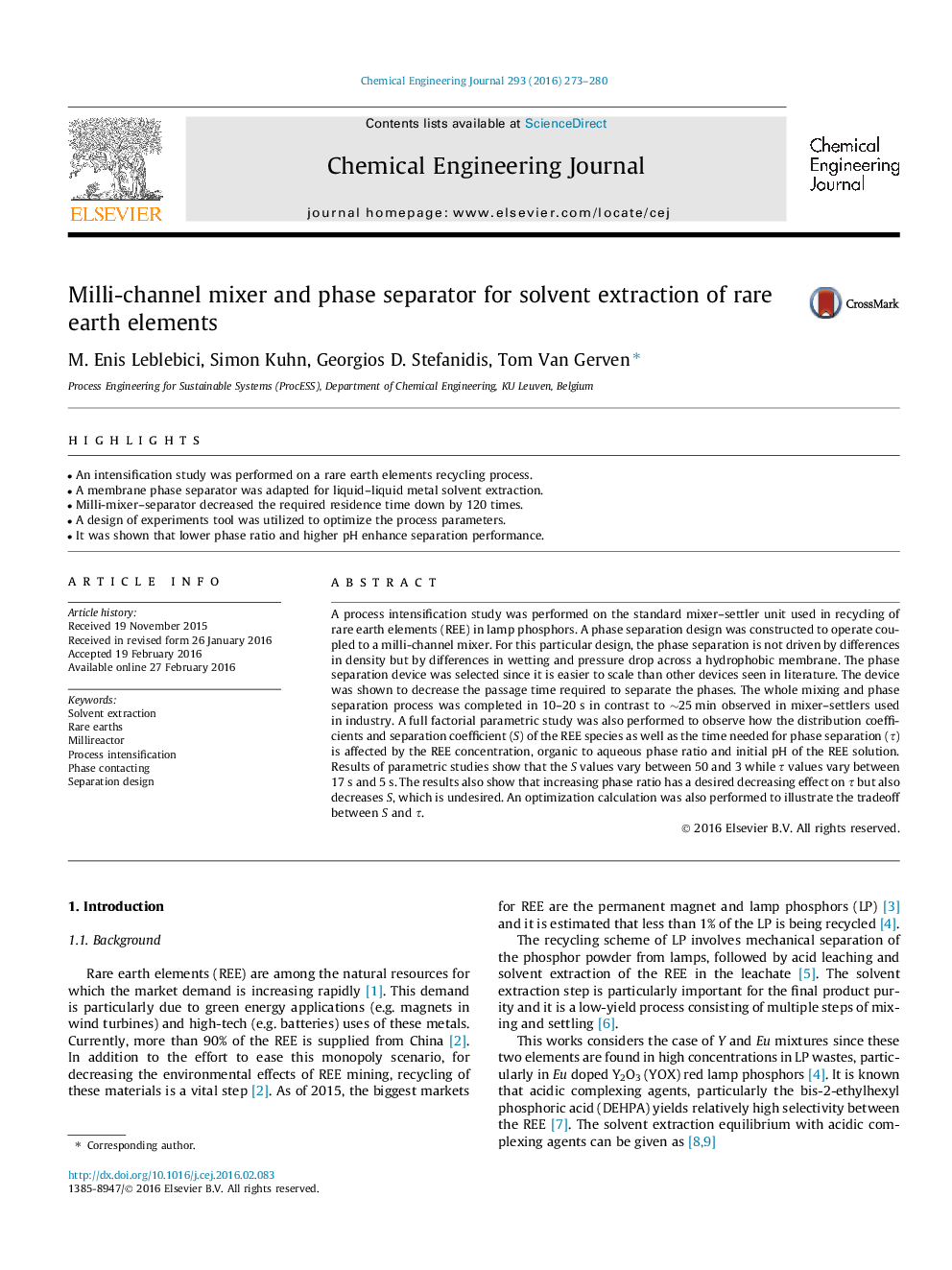| Article ID | Journal | Published Year | Pages | File Type |
|---|---|---|---|---|
| 6581967 | Chemical Engineering Journal | 2016 | 8 Pages |
Abstract
A process intensification study was performed on the standard mixer-settler unit used in recycling of rare earth elements (REE) in lamp phosphors. A phase separation design was constructed to operate coupled to a milli-channel mixer. For this particular design, the phase separation is not driven by differences in density but by differences in wetting and pressure drop across a hydrophobic membrane. The phase separation device was selected since it is easier to scale than other devices seen in literature. The device was shown to decrease the passage time required to separate the phases. The whole mixing and phase separation process was completed in 10-20Â s in contrast to â¼25Â min observed in mixer-settlers used in industry. A full factorial parametric study was also performed to observe how the distribution coefficients and separation coefficient (S) of the REE species as well as the time needed for phase separation (Ï) is affected by the REE concentration, organic to aqueous phase ratio and initial pH of the REE solution. Results of parametric studies show that the S values vary between 50 and 3 while Ï values vary between 17Â s and 5Â s. The results also show that increasing phase ratio has a desired decreasing effect on Ï but also decreases S, which is undesired. An optimization calculation was also performed to illustrate the tradeoff between S and Ï.
Related Topics
Physical Sciences and Engineering
Chemical Engineering
Chemical Engineering (General)
Authors
M. Enis Leblebici, Simon Kuhn, Georgios D. Stefanidis, Tom Van Gerven,
